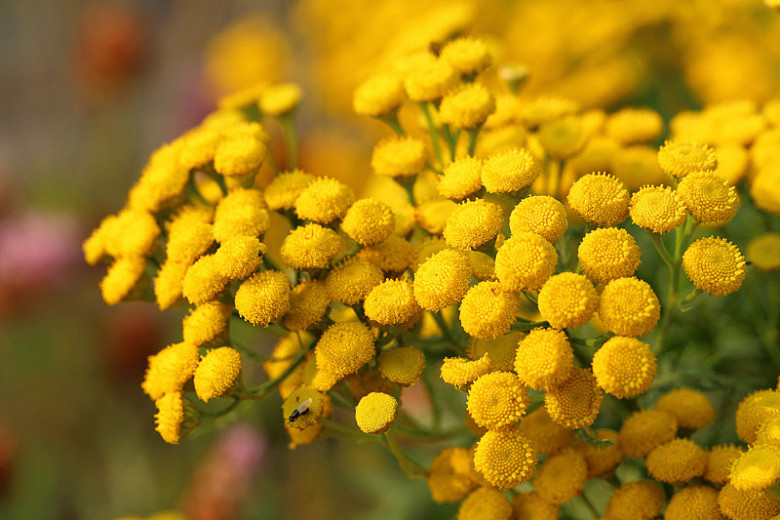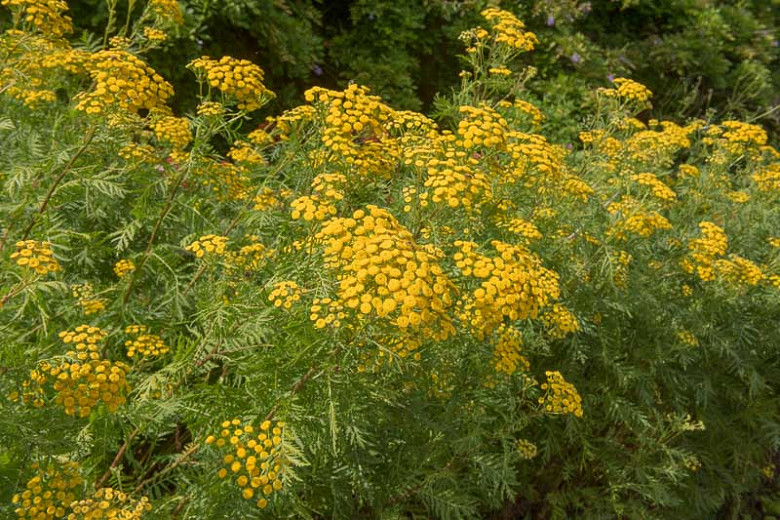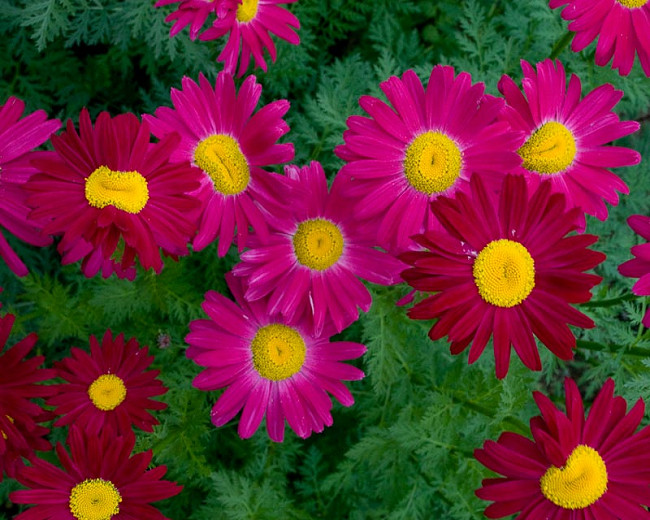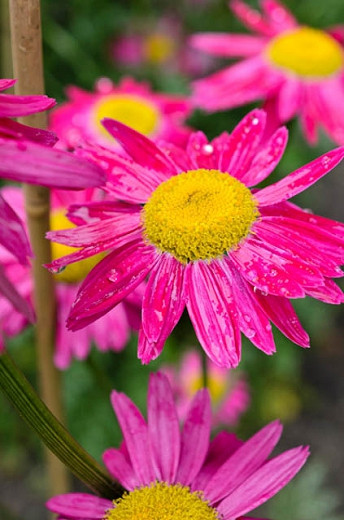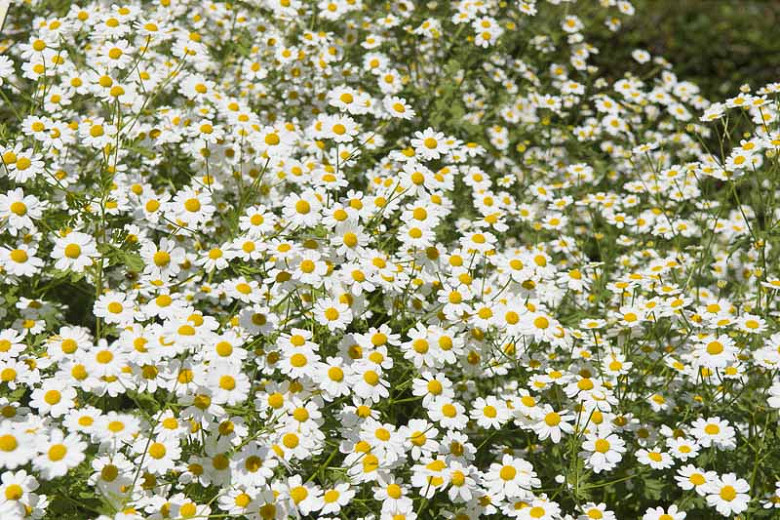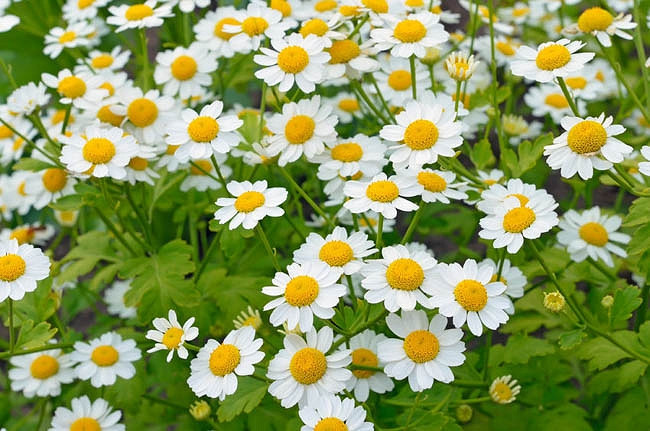Tanacetum vulgare (Tansy)
Tanacetum vulgare (Tansy) is an erect, rhizomatous perennial bearing flat-topped clusters of buttonlike, golden daisy flowers in mid to late summer. They are borne atop strongly-scented, fern-like fresh green foliage.
Tanacetum vulgare (Tansy) is an erect, rhizomatous perennial bearing flat-topped clusters of buttonlike, golden daisy flowers in mid to late summer. They are borne atop strongly-scented, fern-like fresh green foliage. The leaves are often harvested, dried, and used as potpourri. Tansy was once used as a short-term remedy for the treatment of worm infestations of the gut. Today this herb is no longer used medicinally. A natural insect repellent, tansy can be grown outside in pots around outdoor entertaining areas to deter flies and mosquitoes.
- Grows up to 1-3 ft. tall (30-90 cm) and 12-18 in. wide (30-45 cm). Aggressively self-seeds and its spreading rhizomes can be weedy and difficult to remove.
- Performs best in sun to part shade in dry to medium, well-drained soil. Appreciates some afternoon shade in hot summer climates. Prefers moist, humus-rich soils where it can quickly spread by rhizomes but tolerates poor, dry soils where its spreading habit is more limited. Drought tolerant once established.
- Good choice for cottage gardens or naturalized areas (where it can self-seed and spread freely).
- Excellent as fresh cut flowers or in dried arrangements.
- No serious pest or disease issues. Deer resistant.
- Tansy deters ants, asparagus beetle, cabbage butterfly, cabbage maggot, carrot fly, Colorado potato beetle, cucumber beetle, cutworm, flies, cabbageworm, Japanese beetle, and squash bug.
- Tansy is a good companion plant for cabbage, cauliflower, celery, cucumber, potatoes, pumpkin, zucchini, and fruit trees such as apricots, peaches, or cherries.
- Promptly shear off spent flowers in order to control undesired self-seeding.
- Propagate by seed.
- Native to Europe.
- This plant is listed as a noxious weed in several US states and should not be moved or grown under conditions that would involve danger of dissemination.
- Discover beautiful U.S. native plant alternatives.
Requirements
| Hardiness | 3 – 8 |
|---|---|
| Climate Zones | 1, 1A, 1B, 2, 2A, 2B, 3, 3A, 3B, 4, 5, 6, 7, 8, 9, 10, 11, 12, 13, 14, 15, 16, 17, 18, 19, 20, 21, 22, 23, 24 |
| Plant Type | Herbs, Perennials |
| Plant Family | Tanacetum |
| Exposure | Full Sun, Partial Sun |
| Season of Interest | Summer (Mid,Late) |
| Height | 1' – 3' (30cm – 90cm) |
| Spread | 1' – 2' (30cm – 60cm) |
| Spacing | 15″ – 18″ (37cm – 45cm) |
| Water Needs | Low, Average |
| Maintenance | Low |
| Soil Type | Chalk, Clay, Loam, Sand |
| Soil pH | Acid, Alkaline, Neutral |
| Soil Drainage | Moist but Well-Drained, Well-Drained |
| Characteristics | Dried Arrangements, Cut Flowers, Fragrant, Showy |
| Native Plants | United Kingdom |
| Tolerance | Deer, Drought |
| Garden Styles | Prairie and Meadow |
